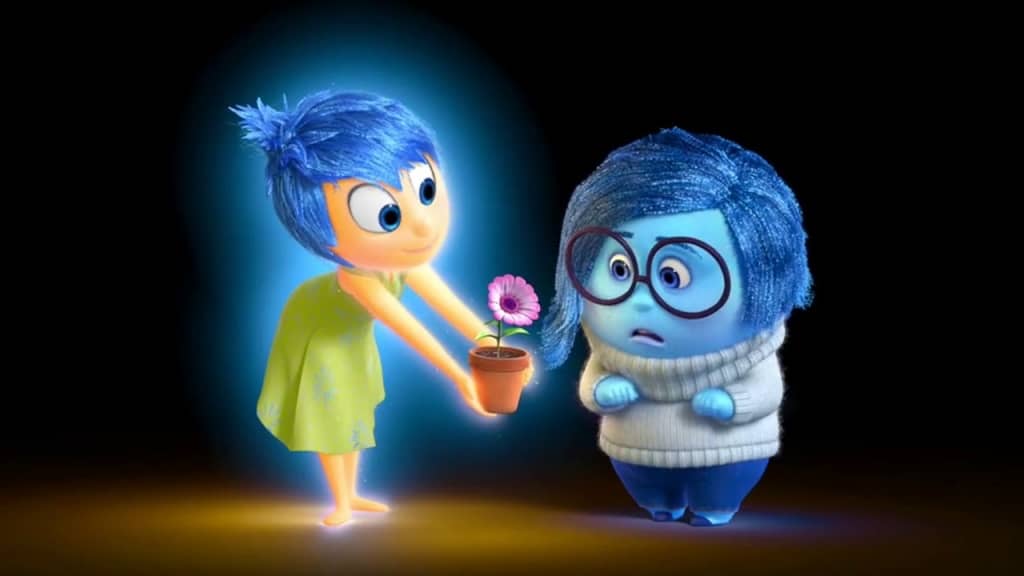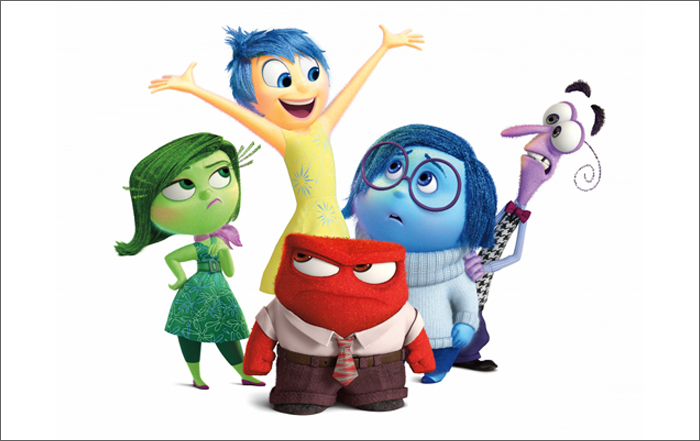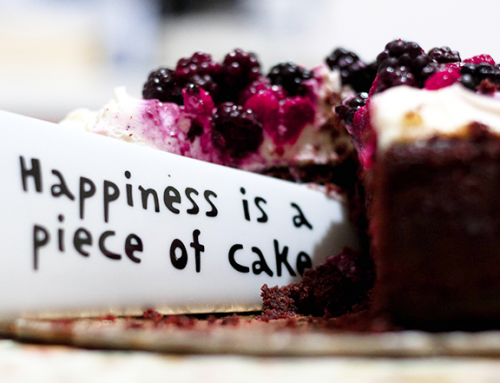Disney’s acclaimed, latest animation picture Inside Out takes place in the head of the 11-year-old girl Riley. Five emotions, personalized by as many characters – joy, fear, anger, sadness and disgust – help her to understand both the world in her head and that surrounding her. The script is based on director Pete Docter’s own childhood experiences, supported by scientific research. Thus the film offers parents a wonderful starting point to talk to their children about feelings. Adults also can learn a lot from Disney Pixar’s latest gem.

Parents are offered a good starting point to talk to their children about feelings.
Riley’s experiences are not just made up by the scenario writers. Professors of Psychology Dacher Keltner of the University of California, Berkeley, and Paul Ekman, of the University of California, San Francisco, have advised them in substance. Although these experts are not one hundred percent happy with the final result – to their taste sadness is portrayed too negatively – the film does give a good idea of what function emotions have, and how they can help you flourish.
The 4 most important things you can learn from Disney’s latest gem (and how scientific research supports this):
1. Happiness is not just about fun
Recent research shows that people who experience ‘emodiversity‘ – ie a range of both positive and negative emotions – are mentally healthier than people who solely focus on positive or negative experiences. If you feel a variety of emotions, the picture you form of the situation will be more complete. Emodiversity creates better behavioral choices – and potentially a greater sense of happiness. This probably explains why the character for this emotion in the movie is called ‘Joy’, instead of ‘Happiness’. Joy is just one element of happiness, which can be affected by other emotions. By sadness, for example.
2. Don’t try to enforce happiness
Research by Stanford University’s emotion expert Iris Mauss and others suggests that it is not a good idea to make happiness an explicit goal in your life. If you do, it can make you feel more miserable. The more you pursue happiness, the more likely that you will set very high standards in this area. And that you will feel disappointed – and less happy – if you are unable to comply.
It is important to consciously make time for experiences that you enjoy. Without denying or avoiding your negative feelings or situations that can lead to that. For such a one-sided approach may properly be counter-productive.

Sadness can help to connect with others, to avoid danger or to recover from loss.
3. Sadness is vital to your well-being
Sadness connects people on a deep level. With what is going on within yourself, and with others. The movie shows how heavy emotions such as sadness, but also fear and anger, may feel very uncomfortable. That is why many people try to avoid it as much as they can. But all these emotions serve an important purpose and are an essential part of your happiness. They give you insight into your ‘inner and outer environments’. In a way that can help you connect with others, to avoid danger or to recover from loss. ‘Sad people can, for example, be generous’, said Joseph P. Forgas, psychology professor at the University of New South Wales in Sydney.
4. Mindfully embrace difficult emotions
As tempting as it might be to steer clear of difficult emotions, or to suppress them, do not do that. Something you avoid or tuck away, often keeps coming back. In a more and more severe form. That does not mean your fear will come true: you get caught up in an emotional drama. This can be prevented through a mindful attitude, that you acquire through some simple exercises. If you are mindful, or have a conscious intent, you simply are aware of the emotion. Without judging it to be ‘right’ or ‘wrong’. This creates room to choose a healthy and helping response. Research from 2014 shows that depressed adolescents and young adults with a mindful attitude have lower levels of depression and anxiety, and are happier.







Leave A Comment